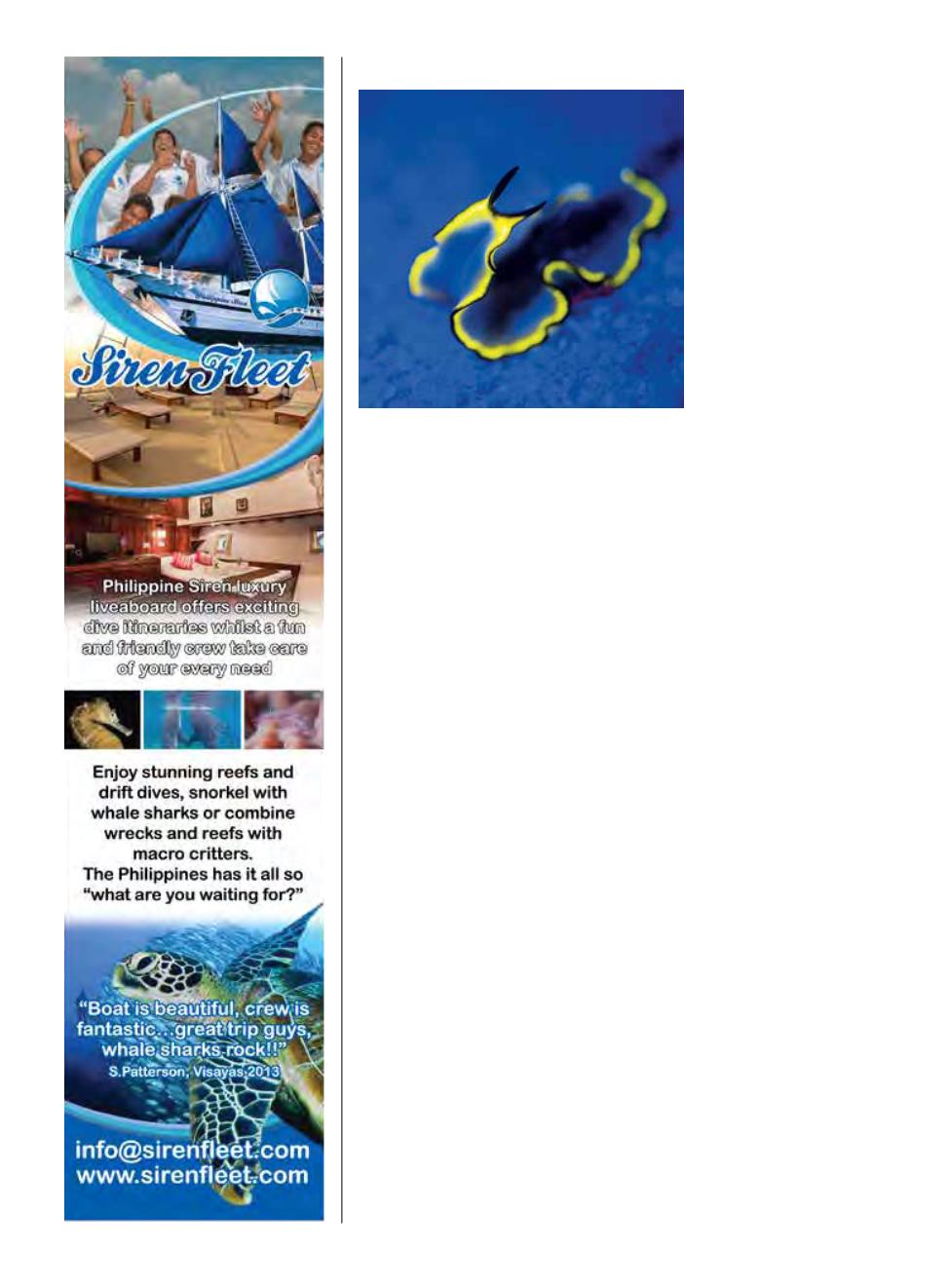
46
|
FALL 2014
proper fluo diving gear, however,
the individual, almost-microscopic
organisms will shine in the sand like
sparkles in the snow on a moonlit
night. Not only is this amazing
to witness, but it also provides
scientifically valuable data.
Coral reefs are considered
the rainforests of the ocean. In
normal waters, corals develop a
symbiosis with single-celled algae
called zooxanthellae, which use
photosynthesis to provide food and
energy to the coral. When water
temperatures rise, the zooxanthellae
are ejected, removing the vital
nutrients the coral needs to survive
and causing “bleaching” of the
coral. The coral bleaching that
accompanies rising temperatures
makes the coral vulnerable to
additional stresses that can
ultimately destroy the entire reef.
Apart from coral bleaching, ocean
acidification reacts with the coral’s
calcium-carbonate skeleton, causing
it to break down and dissolve. These
effects can be witnessed under
white-light conditions, but they are
even more dramatic when using
fluorescent technologies.
Increasing numbers of marine
institutes and universities are using
fluo equipment to assess the effects
of rising ocean temperatures and
acidification on coral in addition to
other more general coral
studies. Fluo diving has
even led to discoveries
of previously unknown
species that were too small
to see with white light but
shine like beacons in the
dark when illuminated
with blue light.
It is not well understood
why some corals and other
sea creatures evolved to
fluoresce, but what is
known is that some marine
organisms — including
corals, tunicates, barnacles,
sponges, anemones, jellyfish, clams,
nudibranchs, cephalopods, shrimp,
crabs, worms and fish — produce
GFP and mutations of GFP that
react when illuminated with a blue
light. The vast variety of species that
demonstrate this effect suggests
that fluorescence is not simply an
accidental byproduct of some other
evolutionary function but likely serves
some currently unknown purpose.
Theories abound as to why these
species evolved to fluoresce. One
thought is that fluorescence serves
as a form of sunblock that can
protect corals and other species
in shallow water from UV energy;
other theories posit fluorescence
as a means of intraspecies
communication. The evolutionary
biology of fluorescence constitutes
a thriving area of study in many
marine institutes and universities.
Still, fluo diving is not only for
scientists. If you would like to try fluo
diving, the Professional Association
of Diving Instructors (PADI) has a
Fluorescence Night Diver distinctive
specialty course that I wrote, which
several dozen certified instructors
around the world teach. The course
covers the science of fluo diving in
much greater detail and specifically
emphasizes the safety implications
unique to fluo diving.
LYNN MINER


